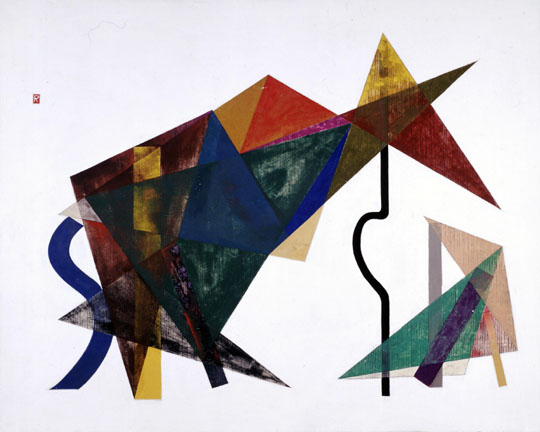"The Avant-Garde of Nihonga 1938-1949" at the National Museum of Modern Art, Kyoto takes issue with nihonga (Japanese-style painting) of the period as a reaction to what has been passed down to the present as the traditional aesthetics and thematics of the genre. These include the conventional materials of mineral pigments and their binding agent nikawa and the long-held respect for themes such as kacho-fugetsu (beauties of nature) and historical and mythological subjects. It also refers to the emergence of a divide that posited nihonga, the amalgamation of Japan's various traditional schools of painting, up against yoga (Western-style painting), which represented the newly imported trends from the West.
The strength of the exhibition is that it lets the artworks tell the story and gives little attention to art-history texts, impractical applications of terminology and the misconstrued essentialism that has come to characterize the nihonga/ yoga gulf.
Given this, "The Avant-Garde of Nihonga" is undoubtedly this year's most provocative Japanese-style painting show so far. In 2008, The National Museum of Modern Art, Kyoto, exhibited the work of avant-garde nihonga painter Ryonosuke Shimomura (1923-1998), a member of the Pan Real Art Association, whose unusual work was exhibited in a Pan Real Art show just after World War II. At that time, curator Hidetsugu Yamano proposed such works as Japan's first real avant-garde nihonga. For the present exhibition, however, the same curator and his colleagues have now identified a precursory avant-garde impulse that existed between the foundation of the Rekitei Fine Art Association in 1938 and the foundation of the Pan Real Art Association in 1949.

















With your current subscription plan you can comment on stories. However, before writing your first comment, please create a display name in the Profile section of your subscriber account page.